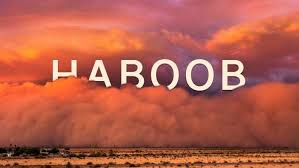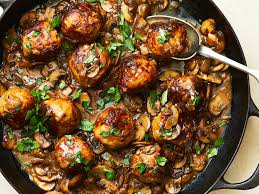
Introduction
On the western tip of Sicily, where the Mediterranean light softens into golden hues and the horizon melts into the sea, lies Marsala — a city steeped in history, layered with cultures, and world-renowned for the fortified wine that bears its name. But Marsala is much more than wine. It is a city of Phoenician heritage, Roman resilience, Arab ingenuity, Norman power, and Italian unification. It is a place where salt pans sparkle in the sun, windmills guard shallow lagoons, and cobblestone streets lead to baroque churches, bustling markets, and inviting trattorie.
This guide explores Marsala’s history and culture, offering a lens through which visitors, historians, and lovers of Mediterranean life can appreciate the city’s enduring legacy.
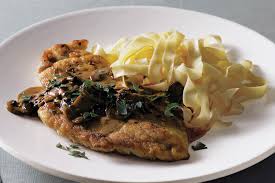
Geography and Setting
Marsala occupies a strategic coastal position on Sicily’s westernmost point, gazing toward Tunisia across the Mediterranean. Its geography has always been central to its identity. The city looks out over the Stagnone Lagoon, a shallow, island-dotted body of water famous for its salt flats and the island of Mozia, a key Phoenician settlement.
The fertile land surrounding Marsala supports vineyards that produce the region’s celebrated wines. The Mediterranean climate, with mild winters and hot, dry summers, has shaped both agriculture and architecture. Narrow streets, whitewashed courtyards, and shaded piazzas reflect the need to adapt to sun and heat.
Historical Background
Phoenician Foundations
Marsala’s story begins in antiquity, when the Phoenicians founded a settlement on the island of Mozia in the 8th century BCE. Mozia became a crucial hub for trade and navigation, thanks to its natural lagoon and proximity to North Africa. When Mozia was destroyed by the Syracusans in 397 BCE, the survivors relocated to the mainland, founding Lilybaeum — the ancient precursor of Marsala.
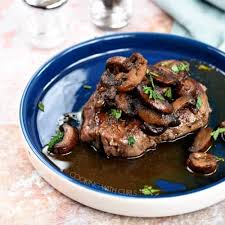
Roman Lilybaeum
The Romans conquered Lilybaeum in the 3rd century BCE, recognizing its strategic importance during the Punic Wars against Carthage. The city became a Roman stronghold, with imposing walls, villas, baths, and an amphitheater. Archaeological remains still attest to Lilybaeum’s prosperity as a gateway between Africa and Europe.
Arab and Norman Marsala
In the 9th century CE, Arab forces took control of Sicily, transforming Lilybaeum into Marsa Allah (“Harbor of God”), from which the modern name Marsala derives. The Arabs revolutionized agriculture, introducing citrus fruits, sugarcane, and irrigation systems. They left their mark on Marsala’s cuisine, language, and urban fabric.
When the Normans conquered Sicily in the 11th century, Marsala thrived under a cosmopolitan court that blended Arab, Byzantine, and Latin traditions. Norman rulers built churches and fortified structures that still stand today.
Renaissance and Baroque Marsala
Under Spanish and later Bourbon rule, Marsala experienced both decline and rebirth. The city was damaged by earthquakes and raids but rebuilt in a baroque style that defines its historic center today. Churches such as the Chiesa Madre (Mother Church of Saint Thomas of Canterbury) showcase ornate facades and lavish interiors.
Garibaldi and the Unification of Italy
Marsala’s most famous modern historical moment came on May 11, 1860, when Giuseppe Garibaldi and his Thousand (I Mille) landed here to begin their campaign to unite Italy. The “Sbarco di Garibaldi” (Garibaldi’s landing) is commemorated annually, and monuments in Marsala honor the city’s role in the Risorgimento.
Marsala the City
Architecture and Landmarks
Marsala’s old town is a blend of baroque elegance and Mediterranean charm. Visitors enter through monumental city gates, such as the Porta Garibaldi and Porta Nuova, remnants of the old walls.
- Chiesa Madre (Cathedral of Saint Thomas Becket): Built by the Normans and later reworked in baroque style, this cathedral dominates Piazza della Repubblica.
- Church of Purgatory: A jewel of Sicilian baroque, with a theatrical facade and a serene interior.
- Archaeological Museum Baglio Anselmi: Home to the remains of a Punic warship and artifacts from Mozia and Lilybaeum.
- Salt Pans and Windmills of Stagnone: Iconic landscapes that are as photogenic as they are historic.
- Mozia Island: A living museum of Phoenician civilization, with ruins, mosaics, and the celebrated statue of the “Giovane di Mozia.”
Culture and Festivals
Marsala’s calendar is rich with cultural events:
- Processione del Venerdì Santo (Good Friday Procession): An emotional and dramatic Holy Week ritual with statues and hooded participants.
- Garibaldi Landing Commemoration (May 11): Historical reenactments celebrate Marsala’s role in Italian unification.
- Festival Internazionale del Vino: A celebration of Marsala wine and Sicilian gastronomy, attracting producers and enthusiasts worldwide.
Cuisine
Marsala’s gastronomy reflects its multicultural past. Dishes include:
- Couscous di pesce: A legacy of Arab influence.
- Pasta con le sarde: Pasta with sardines, wild fennel, pine nuts, and raisins.
- Tonno alla griglia: Freshly caught tuna, a staple of the local diet.
- Dolci alle mandorle: Almond-based sweets, including cassatelle and biscotti.
Meals often end with a glass of Marsala wine, which can be dry, sweet, or used in cooking (like the famous “pollo al Marsala”).
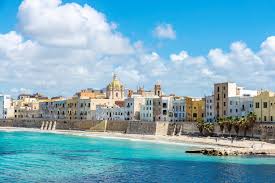
Marsala Wine: The City’s Gift to the World
While this guide focuses on the city, it is impossible to separate Marsala from its wine, a product that transformed the local economy and reputation.
Origins of Marsala Wine
In 1773, the English merchant John Woodhouse recognized the potential of local Sicilian wines when fortified with brandy for preservation. Exported to Britain, Marsala quickly became a staple, especially in naval fleets.
Later, entrepreneurs like Benjamin Ingham and the Sicilian Florio family expanded production, creating vast wine empires that employed thousands and put Marsala on the global map.
Styles and Classifications
Marsala wines are categorized by sweetness (secco, semi-secco, dolce) and color (oro, ambra, rubino). They can be aged from one year (Fine) to over a decade (Vergine Stravecchio), developing complex aromas of dried fruits, caramel, and spices.
Cultural Impact
Marsala wine is both a commercial product and a cultural symbol. It influenced Sicilian cuisine, Italian identity, and international perceptions of the island. Wineries such as Florio and Pellegrino offer tours where visitors can explore historic cellars and taste vintages that connect past to present.
Tourism and Modern Identity
Today, Marsala attracts visitors for its wine tourism, history, and natural beauty. Highlights include:
- Wine tours and tastings in centuries-old cellars.
- Salt road excursions to admire sunset over the pink-tinged pans.
- Archaeological exploration of Lilybaeum and Mozia.
- Beaches such as San Teodoro and Lido Signorino, popular for windsurfing and kitesurfing.
Marsala balances tradition and modernity, celebrating its heritage while embracing sustainable tourism.
Conclusion
Marsala is a city where history and culture intertwine seamlessly. From Phoenician roots to Garibaldi’s landing, from Arab orchards to Norman cathedrals, from baroque squares to wine cellars, Marsala embodies the richness of Sicily itself. It is a city to walk, taste, and experience — a place where every stone, sip, and sunset tells a story.
To visit Marsala is to encounter Sicily in microcosm: ancient, layered, proud, and welcoming. And whether one comes for the wine, the history, or the sea breeze that sweeps across its piazzas, Marsala always leaves an aftertaste — much like its celebrated wine — of warmth, depth, and timelessness.


